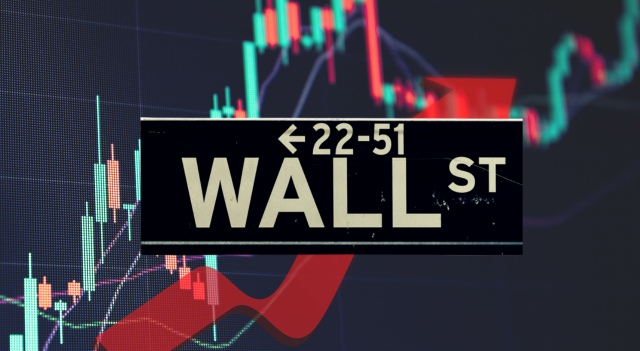Stocks moved to the upside early in the session on Thursday but fluctuated over the course of the trading day before eventually closing modestly lower. The major averages partly offset the strong upward move seen over the two previous sessions.
While the Dow (DOWI:DJI) climbed above 40,000 for the first time in morning trading, the blue chip index ended the day down 38.62 points or 0.1 percent to 39,869.38. The S&P 500 (SPI:SP500) dipped 11.05 points or 0.2 percent to 5,297.10 and the Nasdaq (NASDAQI:COMP) fell 44.07 points or 0.3 percent to 16,698.32.
The early strength on Wall Street reflected an extension of the rally seen during Wednesday’s session, which came amid optimism about the outlook for interest rates following tamer-than-expected consumer price inflation data.
A closely watched Labor Department showed consumer prices rose by less than expected in April, reinforcing expectations the Federal Reserve will lower interest rates in the coming months.
According to CME Group’s FedWatch tool, the chances rates will be a quarter point lower by September have reached 85.5 percent.
Buying interest waned over the course of the session, however, with traders seemingly pausing to assess the near-term outlook for the markets after the major averages reached new record highs.
On the U.S. economic, the Labor Department released a report this morning showing a pullback by initial jobless claims in the week ended May 11th.
The Labor Department said initial jobless claims slid to 222,000, a decrease of 10,000 from the previous week’s revised level of 232,000.
Economists had expected jobless claims to fall to 220,000 from the 231,000 originally reported for the previous week.
The pullback came after jobless claims rose to their highest level since the week ended August 26, 2023 in the previous week.
Meanwhile, traders largely shrugged off a separate Labor Department report showing U.S. import prices jumped by much more than expected in April.
The report said import prices shot up by 0.9 percent in April after climbing by an upwardly revised 0.6 percent in March.
Economists had expected import prices to rise by 0.3 percent compared to the 0.4 percent increase originally reported for the previous month.
The annual rate of growth by import prices also accelerated to 1.1 percent in April from 0.4 percent in March, reflecting the largest over-the-year increase since December 2022.
“The surge in April import prices won’t instill the Fed with greater confidence inflation is decelerating, but officials will assuredly put much more stock in yesterday’s CPI report which was a small step in the right direction and keeps a rate cut in September, our baseline forecast, firmly on the table,” said Matthew Martin, U.S. Economist at Oxford Economics.
A separate report released by the Fed showed U.S. industrial production came in flat in the month of April, with a surge in utilities output offset by decreases in mining and manufacturing output.
The Fed said industrial production came in unchanged in April after inching up by a downwardly revised 0.1 percent in March.
Economists had expected industrial production to edge up by 0.1 percent compared to the 0.4 percent increase originally reported for the previous month.
Sector News
While most of the major sectors showed only modest moves on the day, housing stocks moved sharply lower, dragging the Philadelphia Housing Sector Index down by 2.8 percent.
The index pulled back off its best closing level in well over a month after a Commerce Department report showed a rebound by housing starts in April but a continued slump by building permits.
Airline stocks also showed a significant move to the downside, with the NYSE Arca Airline Index falling by 1.4 percent.
Computer hardware stocks also gave back ground after surging during Wednesday’s session, while tobacco stocks moved notably higher, driving the NYSE Arca Tobacco Index up by 1.3 percent.
Other Markets
In overseas trading, stock markets across the Asia-Pacific region moved mostly higher during trading on Thursday. Japan’s Nikkei 225 Index jumped by 1.4 percent, while Hong Kong’s Hang Seng Index surged by 1.6 percent.
Meanwhile, the major European markets moved to the downside on the day. While the U.K.’s FTSE 100 Index edged down by 0.1 percent, the French CAC 40 Index and the German DAX Index slid by 0.6 percent and 0.7 percent, respectively.
In the bond market, treasuries moved modestly lower over the course of the session after seeing initial strength. As a result, the yield on the benchmark ten-year note, which moves opposite of its price, rose 2.1 basis points to 4.377 percent.
Looking Ahead
Following the slew of U.S. data released over the past two days, the economic calendar is relatively quiet on Friday, although the Conference Board’s report on leading economic indicators in April may still attract some attention.
SOURCE: RTTNEWS
